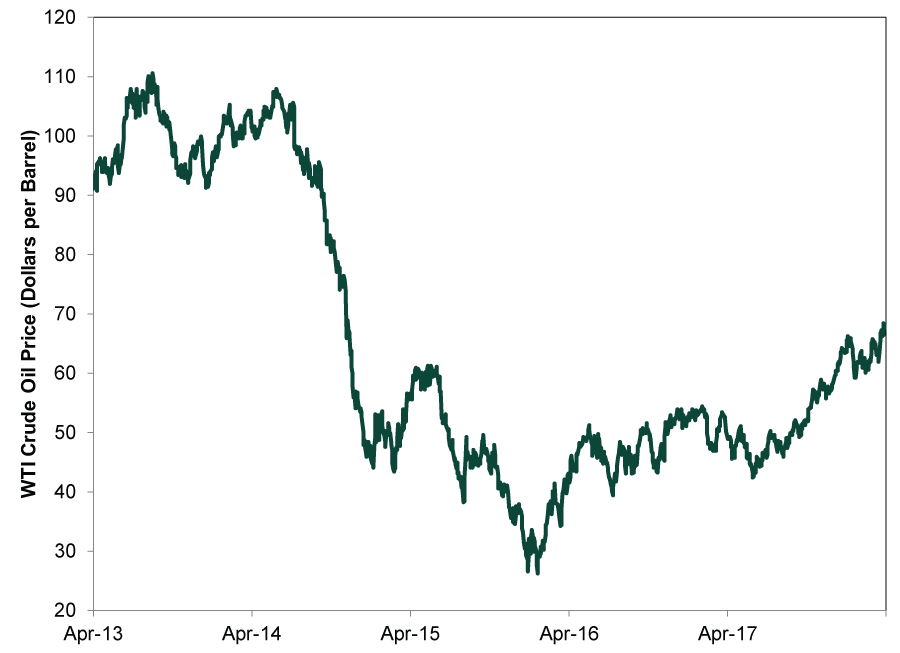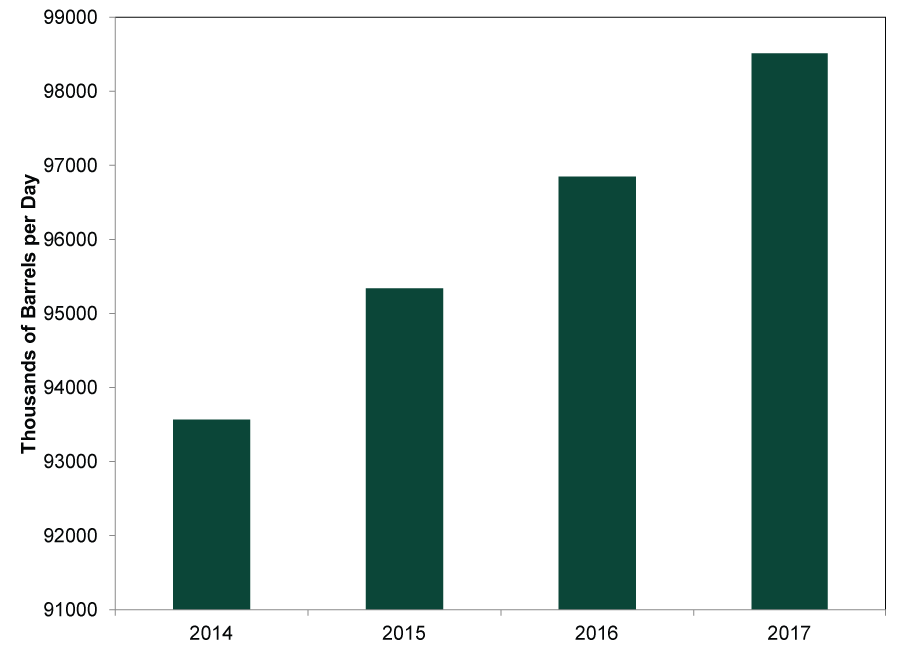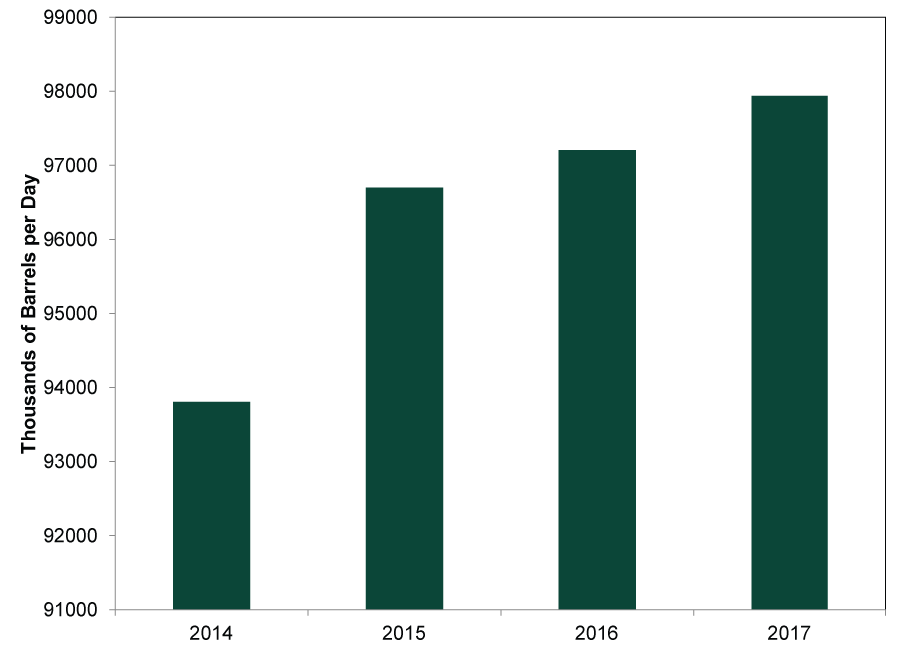Personal Wealth Management / Market Analysis
Will Higher Oil Prices Fuel Energy Stocks?
Do rising oil prices mean Energy stocks are poised to boom?
With oil majors reporting earnings Friday, many are focused on the Energy sector. This adds to widespread attention paid to higher oil prices lately. Some analysts think oil prices will stay elevated, tied to regional conflict or OPEC actions weighing on production—draining global supply. Given that, should investors anticipate a meaningful rebound for the Energy sector? In our view, while the oil supply glut has eased, steady production—and the potential for more—should put a lid on oil prices. Sentiment has seemingly come much more in line with fundamentals in recent months, and investors broadly appreciate the supply glut. However, it is difficult to envision Energy outperforming wildly without a bigger, lasting oil price rebound.
Global oil prices are up 11.8% year-to-date,[i] extending a steady climb that started in June 2017—and part of a longer rebound that began after oil prices bottomed in early 2016. (Exhibit 1)
Exhibit 1: Oil’s Wild Ride

Source: St. Louis Federal Reserve Bank, as of 4/26/2018. Crude Oil Prices: West Texas Intermediate, 4/24/2013 – 4/23/2018.
Some factors driving oil’s recovery were sentiment-related. Markets may have overshot to the downside back in early 2016 as folks capitulated—some analysts were predicting $10 oil when prices dropped below $30. Still others latched onto exaggerated bearish tales of “peak oil demand.” So some of the rebound was probably sentiment snapping back.
But basic supply and demand likely played the biggest role. On the demand side, cheaper prices coupled with a growing global economy contributed to rising gasoline and oil consumption. (Exhibit 2)
Exhibit 2: Global Oil Consumption Since 2014

Source: FactSet, as of 4/25/2018. Annual oil consumption, 2014 – 2017.
Supply growth has also leveled off a bit. After jumping between 2014 and 2015, production has slowed.
Exhibit 3: Global Oil Production Since 2014

Source: EIA, as of 4/25/2018. Annual global petroleum and other liquids production, 2014 – 2017.
This production slowdown gets the most eyeballs, with folks citing several causes. One popular culprit: OPEC’s coordinated production cut.[ii] However, this seems a little overwrought to us. While OPEC recently set a record for complying with the agreed-to cuts, production was capped at still-high levels. Non-OPEC producers participating in the effort have still been pumping a lot. And some caps took into account naturally declining production from older fields. This wasn’t the game changer many believe it was.
Others point to the easing US supply glut. The EIA reported last week that US crude stockpiles have been falling, even as domestic production continues rising. Some analysts argue the shale boom may soon be tapped out as places like the Permian basin in West Texas and New Mexico have run into bottlenecks that could hurt output.
However, while slower global production growth and rising demand have whittled down the oil supply glut, we don’t think oil prices are necessarily going to zoom from here. A major reason: The US, which some outlets forecast will be the world’s biggest oil producer by 2019, can still ramp up production as long as prices make it worthwhile. Most attention focuses on the Permian, which has been one of the world’s most productive oil regions despite oil prices’ past plunge. Folks associate the state of the Permian with the state of US oil, so higher input costs knocking producers there seem worrisome.
But the Permian isn’t the only game in town. Higher oil prices have prompted rising production in other big shale fields like the Bakken. In North Dakota, there are 63 active rigs as of 4/25/2018. That is a far cry from the 182 on the same date in 2014, but it has picked up from 2016’s 26 and 2017’s 49. While rig counts aren’t all-telling, the recent rebound suggests firms are finding reason to pump up their pumping. Beyond rig count, the EIA’s latest numbers show oil production has picked up over the past year. (Exhibit 4)
Exhibit 4: US Oil Production and Rig Count by Region, 2016 - 2018
Source: EIA, as of 4/25/2018.
Plus, even if US rig count doesn’t rise as rapidly as a couple years ago, new technology and drilling techniques have produced more oil and natural gas compared to older methods—firms can get more bang for their investment.
Outside the US, producers around the world are pumping away too. For all the attention paid to OPEC’s coordinated production cut, not all participants are 100% compliant. Saudi Arabia and Russia are the two biggest participants, and while the former has consistently complied with reductions, the latter lapsed recently. Plus, as many members have oil-dependent economies, OPEC itself admitted these cuts won’t go on indefinitely—especially as some members’ pain becomes more acute. That is particularly true should oil prices remain firm.
These basic supply and demand factors suggest Energy stocks aren’t likely to boom any time soon. Energy stocks are highly oil-price sensitive, and while prices are higher compared to a year or two ago, they need fundamental reasons to climb further. Like if demand outpaces supply. Or if supply plunges. Neither of these scenarios looks likely in the near-term, especially given the supply situation. Energy is a big enough sector that it is difficult to ignore in a properly diversified portfolio—and the greater acceptance of supply-related issues probably means the sector won’t underperform by the huge margin it did last year (17 percentage points).[iii] But we don’t see a likely scenario for Energy outperforming this year.
[i] Source: St. Louis Federal Reserve, as of 4/26/2018. Crude Oil Prices: West Texas Intermediate, 12/29/2017 – 4/23/2018.
[ii] The fact President Trump tweeted about this probably enhances the attention this gets a wee bit.
[iii] Source: FactSet, as of 4/27/2018. MSCI World Index return with net dividends minus MSCI World Index Energy sector return with net dividends, 12/31/2016 – 12/31/2017.
If you would like to contact the editors responsible for this article, please message MarketMinder directly.
*The content contained in this article represents only the opinions and viewpoints of the Fisher Investments editorial staff.
Get a weekly roundup of our market insights
Sign up for our weekly e-mail newsletter.

You Imagine Your Future. We Help You Get There.
Are you ready to start your journey to a better financial future?

Where Might the Market Go Next?
Confidently tackle the market’s ups and downs with independent research and analysis that tells you where we think stocks are headed—and why.






